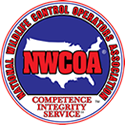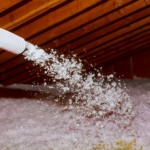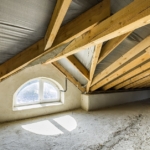Do Bats Burrow In Attic Insulation?
The attic is one of the favorite areas in the house where bats gather in a colony, roost, and raise their young. Bats make the attic a shelter as it is a perfect nesting ground because of the warm temperatures, darkness, and ample insulation.
Rather than roosting from the rafters, bats prefer to burrow and hide in the attic insulation and not be seen by humans or predators. This is particularly true during the winter months when it’s too cold for survival. The bat colony would simply freeze when the temperature outside is too cold. This is why they need to burrow into the insulation, looking for warmth.
Depending on the species, some bats can even hibernate in winter underneath the attic insulation to take advantage of the heat from a ceiling or wall.
They travel toward the heated surface like the attic floor because the ceiling underneath is in a heated space. They will snuggle up under the fluffy insulation material to get close to the warm side of a ceiling or wall. The heat can also keep the pups warm and let them grow and develop more quickly.
Can Bats Dig, Eat, Or Chew Through Insulation?
Perhaps you are wondering… if bats can easily burrow into the insulation, can they dig, eat, or chew through as well?
Bats are not rodents, and even though their teeth are strong enough to gnaw on small crunchy insects like beetles, they will not be able to eat or chew through insulation or cardboard.
They are insectivores that typically swallow the whole bugs, so they cannot dig or gnaw through insulation the way that mice and rats can.
Bats love old attic insulation as it is warm, easy to pull out, break into pieces and move from one place to another to create nests.
But chewing and eating cardboard and insulation materials is a different story, and bats will not do it because:
– There is no such need as they are able to squeeze their bodies through tiny cracks and holes of up to 3/8 of an inch in diameter. While other small wildlife would need to dig, chew, and bite things off in order to gain access to the inside.
– Bats are naturally shy animals, and when they encounter any obstacle or struggle to break through, this discourages them from carrying on. So if your attic is properly sealed, these creatures will move on and look for an easier way in.
Therefore, you should not worry about bats chewing or eating through your insulation, wooden structures, ductwork, or electrical wires in your attic. This doesn’t mean, however, that bats are not a threat to your attic insulation. Keep reading as we explain below in more detail the risks associated with bats burrowing into the insulation.
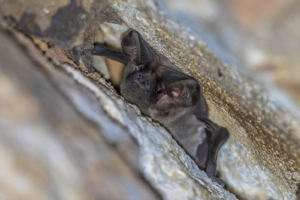
Common Signs Of Bats Living In Your Attic
NOISES
Bats are nocturnal mammals that emit most of their noise in a schedule that’s opposite to that of people. As a result, annoying scratching sounds and other noises can be heard at dawn, dusk, and during the night.
You will be able to hear noises when the colony of bats is on its way in and out of the roost. If they have taken up residence in your house, you may hear what could be described as “scratching” sounds along the walls whenever the bats move around in your attic space.
DROPPINGS
If bats happen to live in your attic, you will definitely spot their droppings. These animals produce guano, a substance that is dark and hard, usually piled up near their nesting sites.
When picked up, guano turns to dust, and sometimes shimmers from the insects digested by the bat. The droppings also have a distinct odor that you will be able to smell all over the house if there is a colony of bats living in your attic.
In addition, you might also get an occasional bat inside your living spaces.
Damage Done To Your Attic And Home
Bats will defecate throughout the space, and the accumulation of droppings and urine can certainly do a lot of damage.
The droppings can destroy materials like drywall and foam insulation. They can bury electrical wires and light fixtures, and cause electrical outages. Also, bat urine and droppings are corrosive and can cause corrosion, leading to wood rot and other damage.
Due to their composition, bat feces will contaminate insulation, especially when they’re present in large amounts.
The animals’ urine and feces can negatively affect the overall air quality and energy efficiency in your home. Because of them, indoor air quality will be diminished over time.
Since bat droppings are usually piled up in only a few places, the weight can quickly become a burden on ceilings and walls. This can lead to damage like sagging and collapsing of the insulated areas.
All of this can result in very costly damage to be repaired. It is recommended to bat-proof and clean the attic after bat infiltration. After that, you will need to replace the contaminated insulation with a new one.
Ideally, you want to prevent a bat infestation from occurring before it even happens. But dealing with one after the fact is still possible. If you suspect your attic is inhabited by a colony of bats, it’s important to call in experts to inspect and assess the situation, and come up with a remediation plan, such as decontamination, old insulation removal, and new insulation installation in the attic.
Pest Control Authority Wildlife has experience in replacing damaged insulation as well as excluding bats from attics in properties in North Carolina. If you have a bat problem, contact us today!
